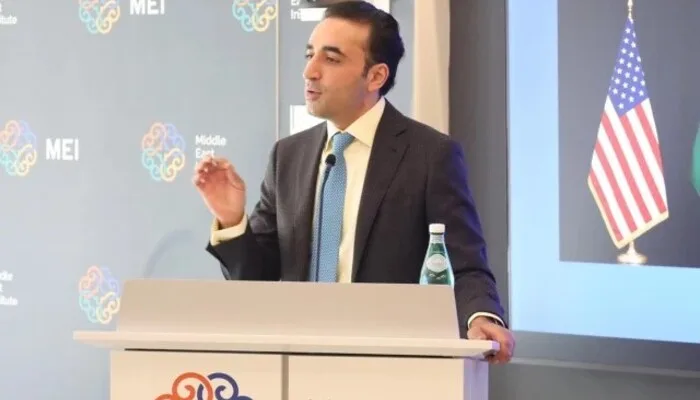
No one enjoys standing in long queues, filling out endless forms, or waiting several days for a simple banking request to be fulfilled. In a world rapidly moving towards speed and convenience, the Pakistani banking industry must evolve, especially in its service delivery. Today’s customers expect efficiency and empathy. They no longer compare banks with other banks—they compare their experience with food apps, ride-hailing services, and e-commerce platforms. It’s no longer enough to have digital platforms; banks must ensure those platforms, and the services behind them, deliver real value. With the right integration of Artificial Intelligence (AI) and a human-centered approach, banks can redefine service quality, turning routine interactions into delightful experiences.
Where We Are Now
Pakistan’s banking sector has made noticeable strides in the last decade. From digital account opening to mobile apps, QueueMatic systems, WhatsApp banking, and SMS alerts—services have become far more accessible than before. Yet, despite all this advancement, the experience often breaks down inside the physical branch. Customers walk in expecting speed, but are met with long turnaround times (TATs), low teller transaction limits, outdated workflows, and staff that may not be fully trained or empowered. Even with the availability of digital tools, many customers leave branches feeling more frustrated than satisfied. This signals a gap—not just in technology, but in how it’s used. Progress has been made, no doubt. But we’re not there yet. To meet rising expectations, we need more than technology—we need transformation.
What Needs to Change
Improving service quality isn’t just about digitizing more processes—it’s about delivering intelligent, empathetic experiences that are both efficient and human. This is where AI can become a powerful ally, not by replacing humans, but by enabling them. Imagine letting AI handle repetitive tasks like form-filling, identity verification, or processing basic transactions. It can reduce wait times dramatically and allow staff to focus on more complex, personalized interactions. AI can also analyze customer behavior to predict needs and offer the right services at the right time, like a helpful reminder popping up before you even ask. It can identify trends in complaints or delays, allowing banks to fix issues before they escalate. AI can even sense emotion in a customer’s voice or message, helping banks respond with greater care and urgency. All of this doesn’t remove the human—it strengthens them. Additionally, it’s time banks simplify their processes: if a customer can pay a bill in two clicks online, it shouldn’t take 15 minutes at a counter. Teller limits should be adjusted with built-in safety checks to avoid unnecessary delays. Also, service excellence doesn’t happen on its own. Staff need consistent, practical training, especially after mystery shopping feedback or new product rollouts. A well-informed, confident team creates a smooth, reassuring experience for the customer.
Smarter Queue Management and Customer Feedback
Queue systems need a major upgrade—from simple token generators to intelligent systems that actually enhance service. Modern queue management can do more than assign numbers. It can collect real-time feedback, alert staff when someone has been waiting too long, and even let customers leave instant suggestions on a touchscreen. This immediate loop of communication can help managers take quick actions rather than waiting for monthly reports. More importantly, it tells the customer, “Your time and feedback matter.” A smarter queue experience is often the first sign that a bank is serious about improving service. It reflects efficiency, responsiveness, and a willingness to evolve. These elements together can completely change how customers feel about their visit—even if they had to wait a bit. In addition, imagine being able to handle simple services like deposits or utility payments at any bank branch, regardless of where your account is held. That’s the future of interbank collaboration—and it’s not far off, if banks work together with the help of shared digital platforms.
Read: Why Many Infants Struggle to Sleep: Doctors Explain Medical Causes
Keeping the Human in Digital
As we embrace AI and automation, we must not lose sight of the human connection. A customer may not remember the exact interest rate you offered, but they’ll always remember how you made them feel. That’s the emotional side of service—and it matters. Sometimes, all it takes is a staff member who listens, who understands the frustration of a long wait or a failed transaction, and who responds not with policy, but with empathy. Global banks are already leading the way—using AI to speed up operations, but relying on humans to build trust. Pakistani banks can do the same. Technology should make things smoother and faster, but only humans can make them feel personal. This balance is crucial. It’s not a choice between AI and people—it’s about combining both to create a seamless, yet meaningful, customer journey. A simple apology, a genuine smile, or a reassuring sentence can turn an ordinary service into a memorable one. That’s what customers talk about, share on social media, and remember the next time they choose a bank.
It’s About Expectations, Not Just Transactions
Banking is no longer just about deposits, withdrawals, or loans. It’s about expectations. Customers expect personalized, proactive service. They want to feel heard, respected, and valued. They want technology that works without glitches, and staff that understand their needs without making them repeat themselves. This isn’t a luxury anymore—it’s the baseline. The banks that will lead in the future are those that understand this shift. By blending AI with empathy, digital efficiency with human warmth, and automation with active listening, Pakistani banks can create a service model that’s both modern and memorable. The future of banking is not just fast—it’s smart, simple, and human. And that’s the kind of future we need to start building today. Together.
















